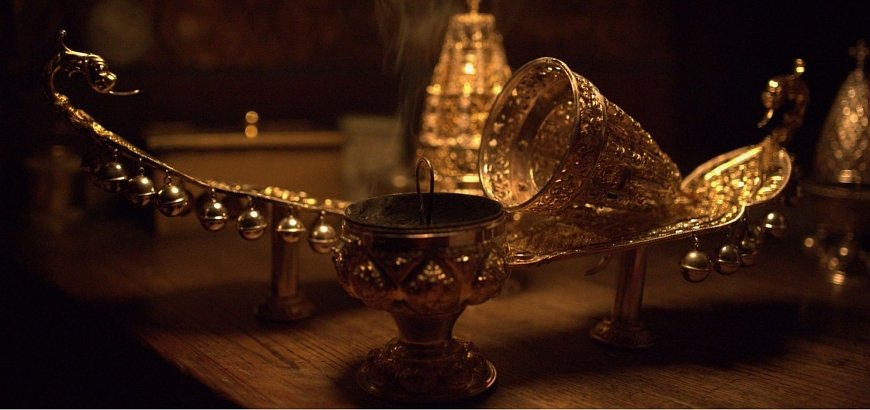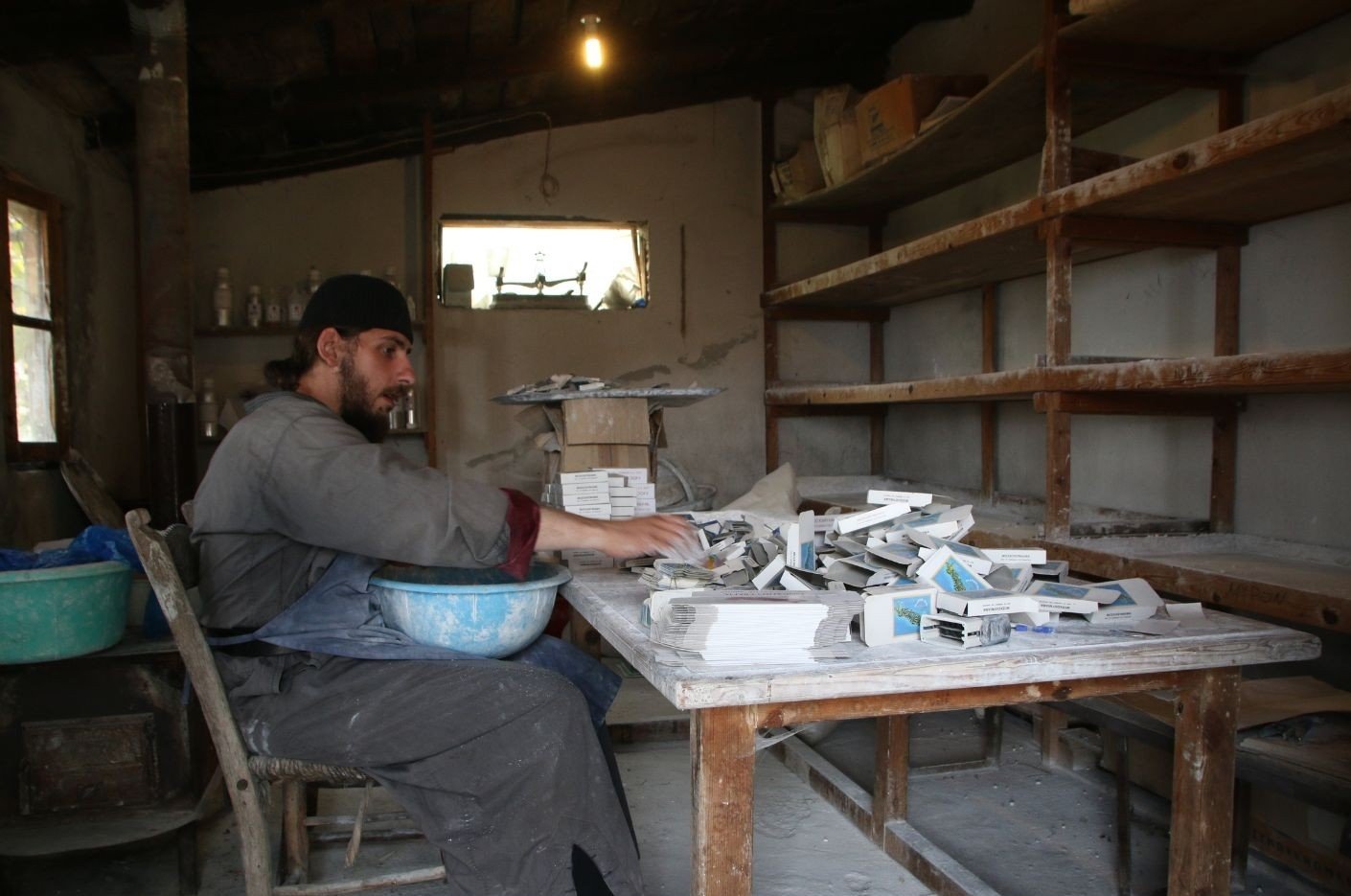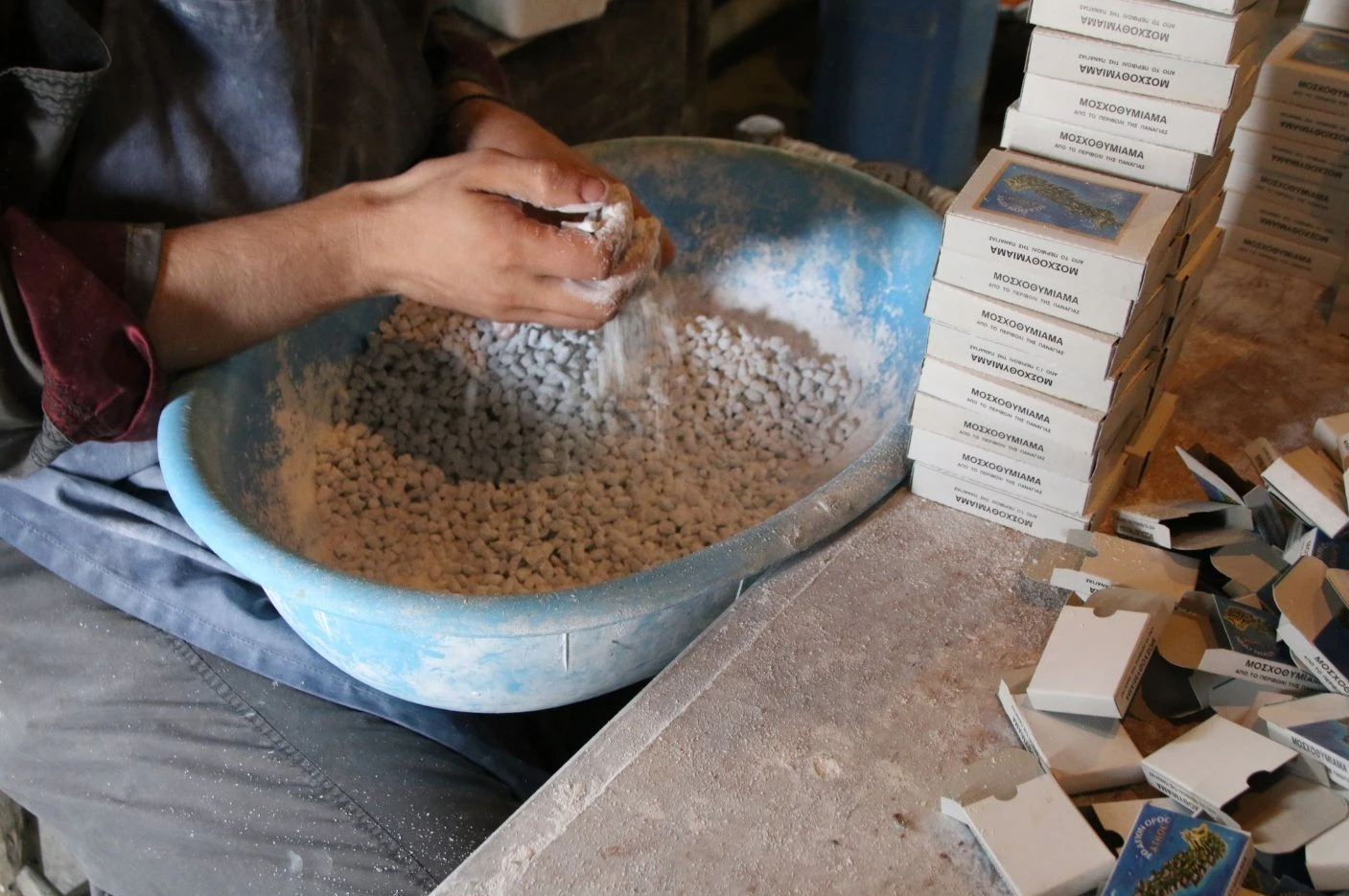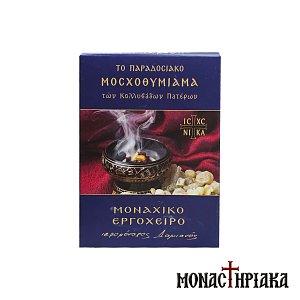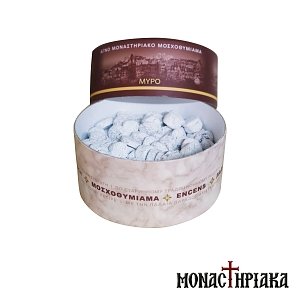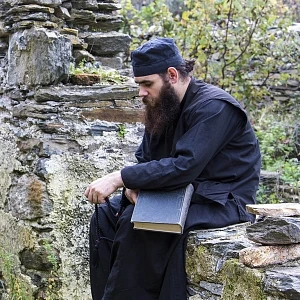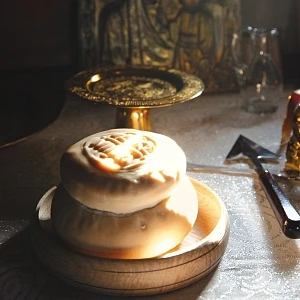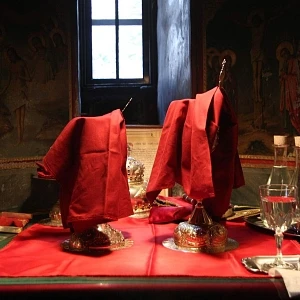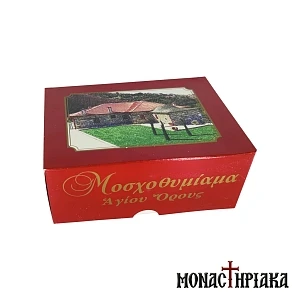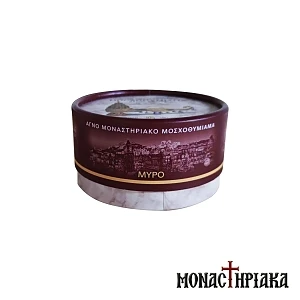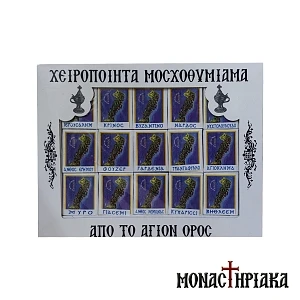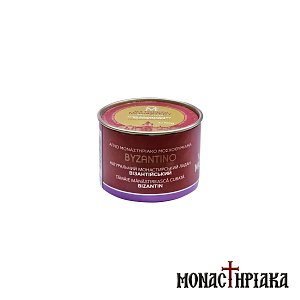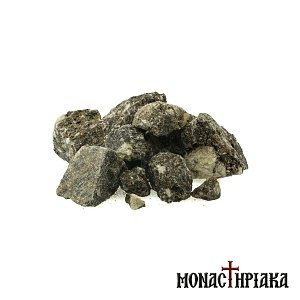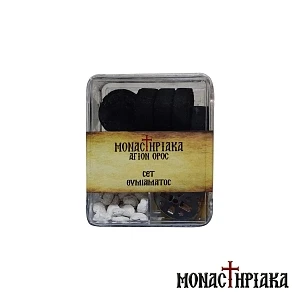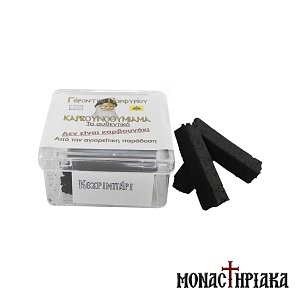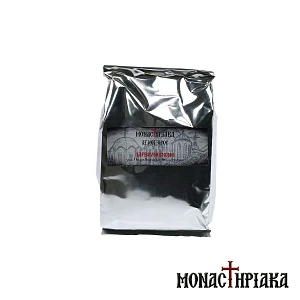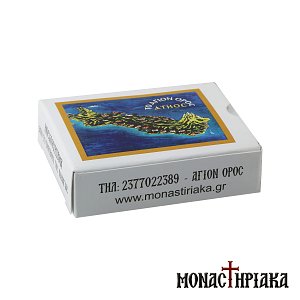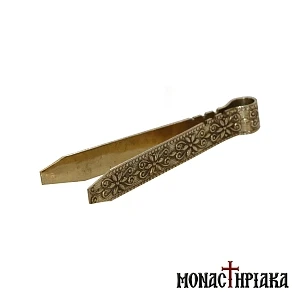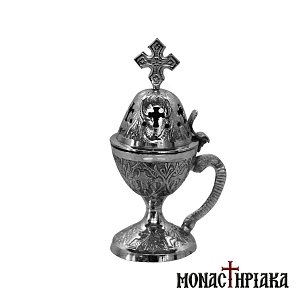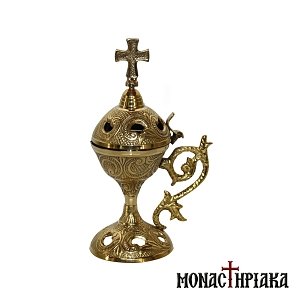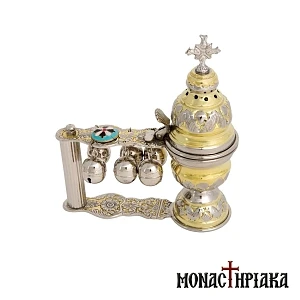Ποια η διαφορά ανάμεσα στο θυμίαμα και το λιβάνι
Από τα αρχαία χρόνια, το θυμίαμα αναφέρεται στο αρωματικό ρετσίνι ή κόμμι (κολλώδης ουσία) που εξάγεται από τις τομές στον κορμό του κέδρου στον Λίβανο, από όπου προέρχεται και η λέξη λιβάνι.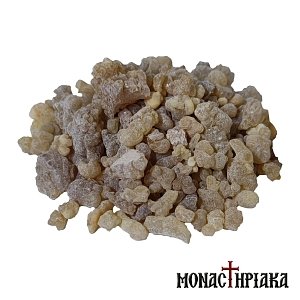
Παρόλο που συχνά οι έννοιες θυμίαμα και φυσικό λιβάνι χρησιμοποιούνται ως συνώνυμες, δεν ταυτίζονται. Το λιβάνι αποτελεί ένα από τα συστατικά του θυμιάματος. Σύμφωνα με τη θεϊκή εντολή στην Παλαιά Διαθήκη, το θυμίαμα έπρεπε να περιέχει 4 βασικά συστατικά: μαστίχα, όνυχα, γάλβανο και καθαρό λιβάνι (Έξοδος 30: 34-38).
Έτσι, ένας εξειδικευμένος αρωματοποιός δημιούργησε αυτό το ευωδιαστό μείγμα, προσθέτοντας λίγο αλάτι, ώστε να καθαρίσει και να είναι ιερό. Στα χρόνια του Ιησού Χριστού, το θυμίαμα περιείχε 13 αρωματικά συστατικά, όπως αναφέρει ο Ιώσηπος.
Είπεν ακόμη ο Κυριος προς τον Μωϋσήν· “πάρε δια τον εαυτόν σου αρωματικά είδη, δηλαδή στακτήν, όνυχα (αρωματικόν κογχύλιον), χαλβάνην ηδυσμού (αρωματώδη ρητίνην) και λιβάνι διαφανές, ίσην ποσότητα από κάθε είδος. Θα παρασκευάσουν με τα είδη αυτά θυμίαμα ευώδες, έργον ειδικού μυροποιού, σύνθετον από τας ανωτέρω ουσίας, καθαρόν, έργον αφιερωμένον στον Θεόν. Θα κύψης και θα κοπανίσης αυτό εις λεπτά τεμάχια, θα το θέσης εις την Σκηνήν του Μαρτυρίου απέναντι της Κιβωτου, από όπου εγώ θα φανερώνωμαι προς σε και θα σου ομιλώ. Το θυμίαμα αυτά θα είναι αγιώτατον δια σας…” (Έξοδος 30: 34-38)
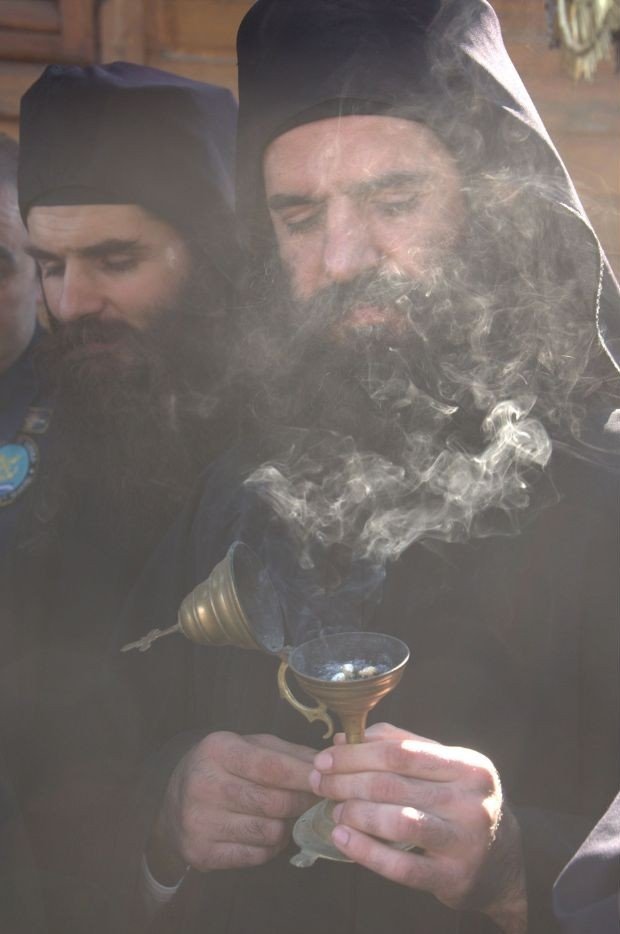
Βρείτε εδώ: Παραδοσιακό Θυμίαμα από το Άγιον Όρος
Βρείτε εδώ: Φυσικό Λιβάνι από το Άγιον Όρος
Τι είναι το μοσχοθυμίαμα
Το μοσχοθυμίαμα είναι μία πιο πρόσφατη μορφή θυμιάματος, η οποία δημιουργείται με την ανάμειξη αλεσμένου φυσικού λιβανιού και αρωματικών ουσιών σε συγκεκριμένες αναλογίες.
Η παρασκευή του μοσχοθυμιάματος στο Άγιον Όρος
Η παρασκευή του μοσχοθυμιάματος συνεχίζεται ακατάπαυστα εδώ και αιώνες από τους μοναχούς του Αγίου Όρους. Μάλιστα, για την παρασκευή του χρησιμοποιούσαν πολλές φορές και πέταλα λουλουδιών μαζί με λιβάνι που έχει κοπανιστεί στο γουδί.
Μετά το ζύμωμα, οι αγιορείτες πατέρες τοποθετούν το σκούρο μείγμα του θυμιάματος σε ταψιά για να στεγνώσει και αργότερα το κόβουν σε μικρά κομμάτια, ώστε να χρησιμοποιηθεί σε ειδικές περιστάσεις.
Βρείτε εδώ: Αγιορείτικο Μοσχοθυμίαμα - Παραδοσιακή συνταγή
Τι συμβολίζει το θυμίαμα
Στην Παλαιά Διαθήκη, η προσφορά θυμιάματος ακολουθούσε τη θεϊκή εντολή. Έπρεπε να τελείται πρωί και βράδυ, συνοδευόμενη από το άναμμα λυχναριών, όπως αναφέρεται στο βιβλίο της Εξόδου (30:7-8). Αυτή η ιερή πράξη διατηρήθηκε στη χριστιανική παράδοση έως και σήμερα.
Προσευχή και δίοδος επικοινωνίας με τον Θεό
Το θυμίαμα έχει βαθιά συμβολική υπόσταση και λειτουργεί ως δίοδος επικοινωνίας με τον Θεό. Όταν καίγεται το θυμίαμα και προσευχόμαστε, ουσιαστικά παρακαλούμε τον Κύριο να ανεβεί η προσευχή μας προς τον θρόνο Του, όπως ανεβαίνει το ευωδιαστό θυμίαμα προς τον ουρανό.
Παράλληλα, εκφράζει την πνευματική άνοδο της ψυχής και την θερμή επιθυμία μας να γίνει δεκτή η προσευχή μας ως «οσμή ευωδίας πνευματικής».
Στην Εκκλησία, το θυμίαμα προσφέρεται κατά την ακολουθία του Εσπερινού, ενώ ψάλλεται ο δεύτερος στίχος του 140ου Ψαλμού: «Κατευθυνθήτω η προσευχή μου ως θυμίαμα ενώπιόν Σου…».
Τι πρέπει να κάνουμε την ώρα του θυμιάματος στην Εκκλησία
Οι πιστοί, όταν θυμιατίζονται από τον ιερέα στην Εκκλησία, πρέπει να σκύβουν ελαφρώς το κεφάλι τους ως ένδειξη αποδοχής αυτής της θείας χάρης.
Ο Άγιος Ιωάννης ο Χρυσόστομος εξηγεί ότι, όπως το θυμίαμα είναι από την φύση του ευωδιαστό, αλλά αναδίδει την ευωδία του περισσότερο όταν έρχεται σε επαφή με την φωτιά, έτσι και η προσευχή αποκτά μεγαλύτερη δύναμη όταν πηγάζει από μία φλογερή και αφοσιωμένη ψυχή.
Βρείτε εδώ: Εκκλησιαστικά θυμιατά σε διάφορα σχέδια
Γιατί λιβανίζουμε στο σπίτι
Συνήθως, το λιβάνισμα στο σπίτι από τους πιστούς, τελείται δύο φορές την ημέρα, το πρωί και το βράδυ, ως ώρες προσευχής και ευχαριστίας προς τον Θεό. Το πρωί θυμιατίζουμε, δοξολογώντας τον Κύριο για την ειρηνική νύχτα που πέρασε και παράλληλα ζητάμε την ευλογία Του για την ημέρα που ξεκινά.
Το βράδυ, προσευχόμενοι ξανά, Τον δοξολογούμε για όσα συνέβησαν κατά τη διάρκεια της ημέρας και Τον παρακαλούμε να μας προστατεύσει κατά τη νυχτερινή ανάπαυση.
Συνεπώς, η χρήση θυμιάματος στο σπίτι συνοδεύεται από προσευχή, συμβάλλοντας στη δημιουργία κατανυκτικού κλίματος και ελκύοντας την αγιαστική χάρη.
Οι πιστοί συνηθίζουν να θυμιατίζουν πριν την προσευχή, όταν διαβάζουν παράκληση ή όταν ζυμώνουν πρόσφορα. Η πράξη αυτή λειτουργεί ως υπόμνηση της παρουσίας του Θεού και των Αγίων στη ζωή μας.
Βρείτε εδώ: Σετ Θυμιάματος με καρβουνάκια, θυμίαμα, φυτιλάκια και καντηλήθρα
Προσευχή για λιβάνισμα στο σπίτι
Κατά το θυμιάτισμα στο σπίτι, οι πιστοί μπορούν να λένε την ακόλουθη προσευχή:
«Κατευθυνθήτω η προσευχή μου ως θυμίαμα ενώπιον σου. Έπαρσις των χειρών μου, θυσία εσπερινή» (Ψαλμ. 140.2)
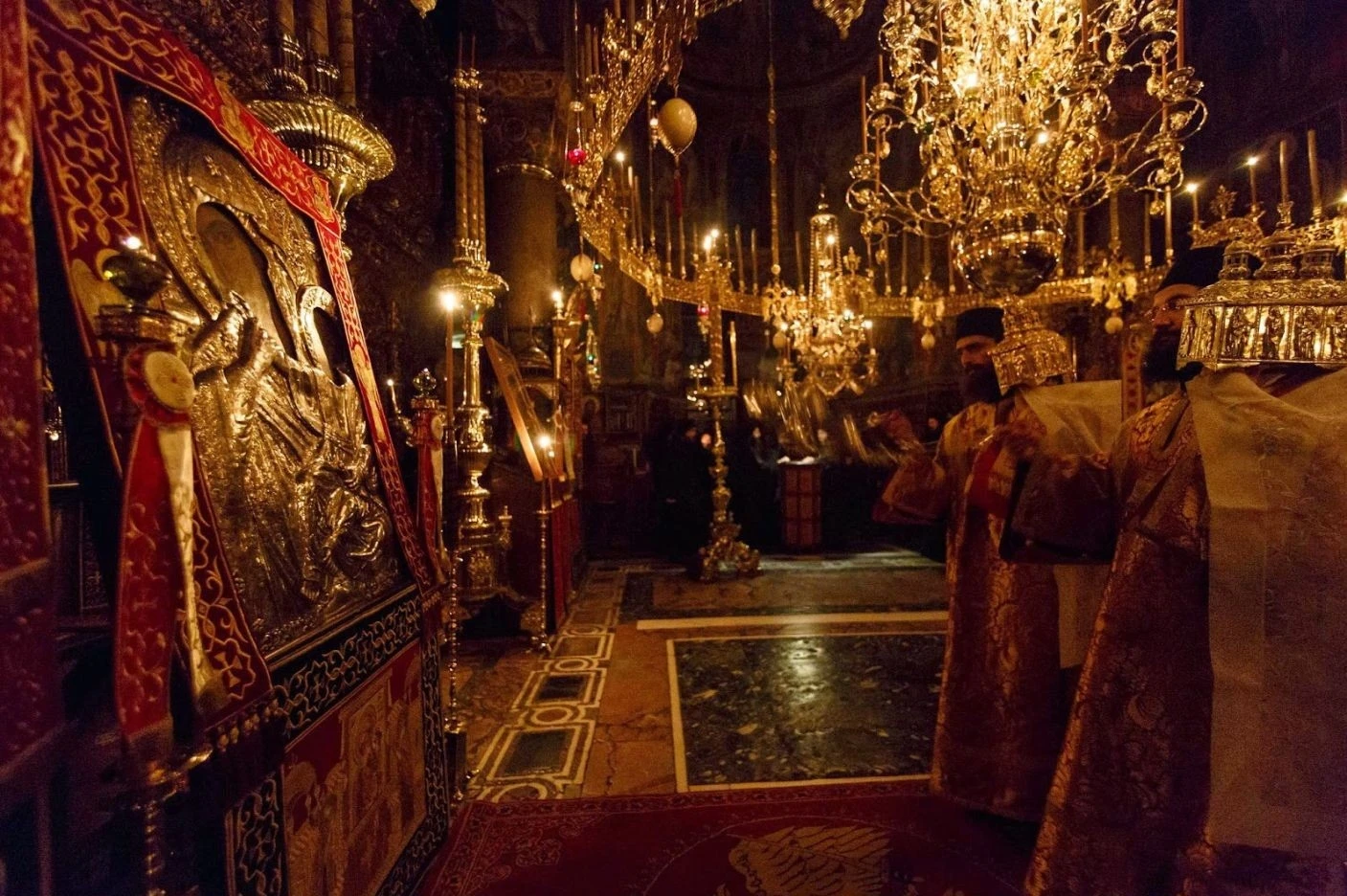
Τι συμβολίζει το λιβάνισμα στο σπίτι και στην Εκκλησία
Το θυμιάτισμα ή αλλιώς λιβάνισμα, είτε στην Εκκλησία είτε στο σπίτι, αποτελεί μια πράξη που ενώνει τον άνθρωπο με τον Θεό, προσφέροντας αίσθηση κατάνυξης και πνευματικής ανάτασης.
Επιπλέον, το ευωδιαστό θυμίαμα συμβολίζει τον αίνο, δηλαδή την ευχαριστία προς τον Θεό. Η καύση του θυμιάματος εκφράζει την λατρεία και τον εξιλασμό, ενώ το άρωμά του, διαχέεται στον χώρο του ναού.
Παράλληλα, δηλώνει την πλήρωση της καρδιάς μας με τη θεία ευαρέσκεια, καρπό της αγάπης μας προς το Θεό. Κάθε πιστός, μέσα σε αυτή την ατμόσφαιρα γίνεται «ευωδία Χριστού».
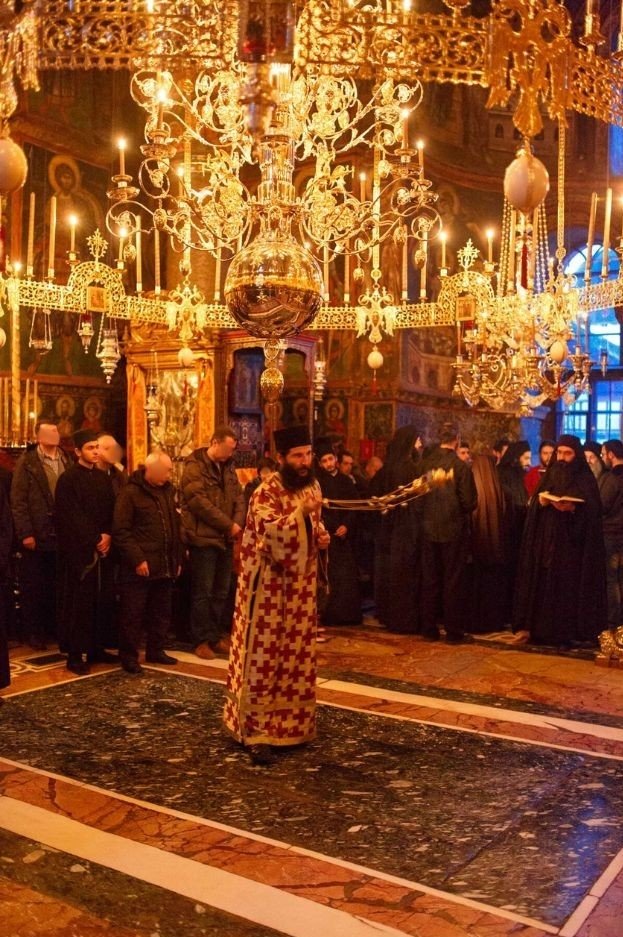
Βρείτε εδώ: Παραδοσιακό Θυμίαμα από το Άγιον Όρος
Πώς συνδέεται το θυμίαμα με την Πεντηκοστή
Το θυμίαμα συμβολίζει επίσης τις πύρινες γλώσσες της Αγίας Πεντηκοστής, όταν το Άγιο Πνεύμα κατήλθε στους μαθητές του Χριστού «εν είδει πυρίνων γλωσσών». Στην Πρόθεση, ο ιερέας δίνει την ευχή που εκφράζει αυτή τη σύνδεση, αναφέροντας τα εξής λόγια:
«Θυμίαμά Σοι προσφέρομεν, Χριστέ ο Θεός, εις οσμήν ευωδίας πνευματικής, ο προσδεξάμενος εις το υπερουράνιόν Σου θυσιαστήριον, αντικατάπεμψον ημίν την χάριν του Παναγίου Σου Πνεύματος».
Με αυτόν τον τρόπο, μέσω του θυμιάματος ζητείται η κάθοδος του Αγίου Πνεύματος.
Ο Άγιος Συμεών Θεσσαλονίκης εξηγεί ότι το θυμίαμα δηλώνει τη χάρη του Θεού που εκχύθηκε στον κόσμο μέσω του Ιησού Χριστού και επιστρέφει στους ουρανούς μέσω Αυτού.
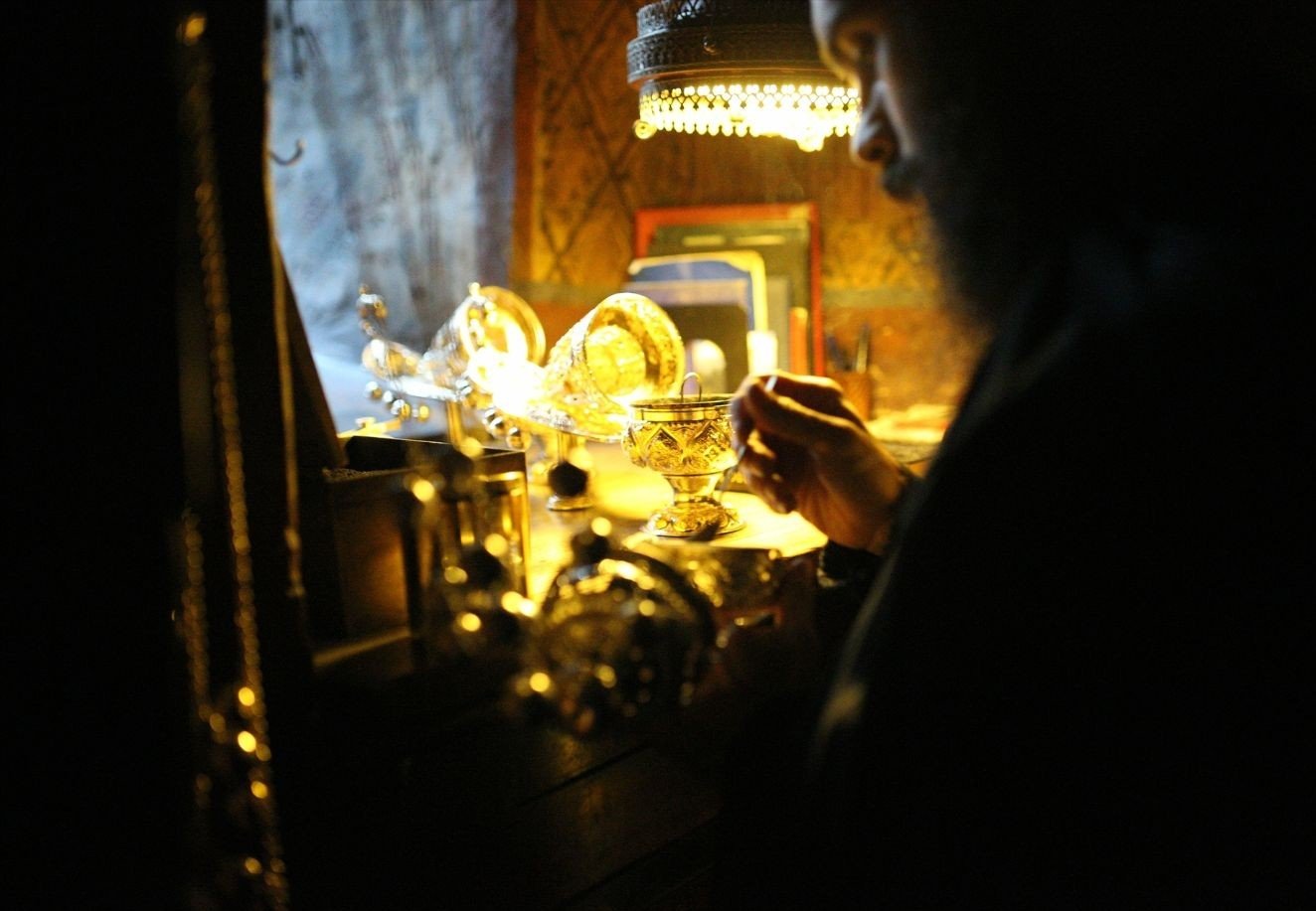
Βρείτε εδώ: Κασετίνα με Θυμίαμα - Ιερό Κελί Γενέσιο της Θεοτόκου
Τι συμβολισμούς κρύβει το θυμιατό
Το θυμιατό είναι ένα φορητό, μεταλλικό σκεύος, στο κάτω μέρος του οποίου τοποθετούνται αναμμένα καρβουνάκια ή καρβουνόσκονη. Το θυμιατό χρησιμοποιείται σε όλες τις εκκλησιαστικές ακολουθίες στους Ιερούς Ναούς, στα σπίτια των πιστών, αλλά και στα μνήματα των αγαπημένων μας.
Τα εκκλησιαστικά θυμιατά στηρίζονται σε τέσσερις αλυσίδες, οι οποίες φέρουν δώδεκα κουδουνάκια που συμβολίζουν τους Τέσσερις Ευαγγελιστές και τους Δώδεκα Αποστόλους αντίστοιχα. Το άναμμα του θυμιατού συμβολίζει και καταδεικνύει την πίστη και την αγάπη του ανθρώπου προς το Θεό.
Το θυμιατήρι, όπου καίγονται τα κάρβουνα και τοποθετείται το θυμίαμα, συμβολίζει την μήτρα της Θεοτόκου. Σύμφωνα με τον Άγιο Κοσμά τον Αιτωλό, το θυμιατήρι συμβολίζει την ίδια την Θεοτόκο.
Όπως τα κάρβουνα φλέγονται χωρίς να καταστρέφουν το θυμίαμα, έτσι και η Υπεραγία Θεοτόκος δέχθηκε τον Ιησού Χριστό, το «πύρ καταναλίσκον», στα σπλάχνα της χωρίς να υποστεί κάποια φθορά ή αλλοίωση.
Η βάση του θυμιατηρίου συμβολίζει την ανθρώπινη φύση του Χριστού, ενώ η φωτιά δηλώνει την θεϊκή Του υπόσταση και τη Θεία Αγάπη που καίει σαν φλόγα στις καρδιές όλων των πιστών. Ο καπνός που αναδύεται συμβολίζει την ευωδία του Αγίου Πνεύματος.
Βρείτε εδώ: Θυμιατά για το Σπίτι
